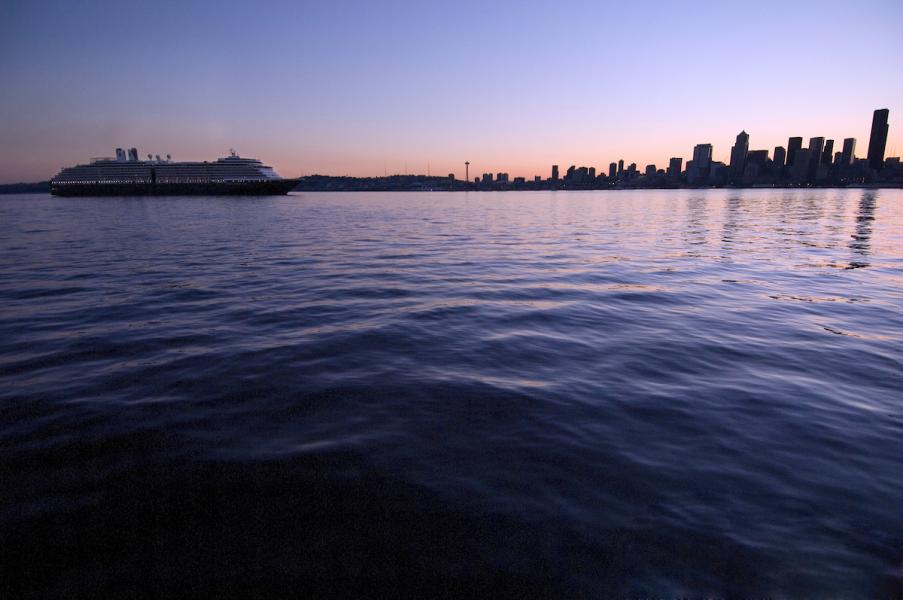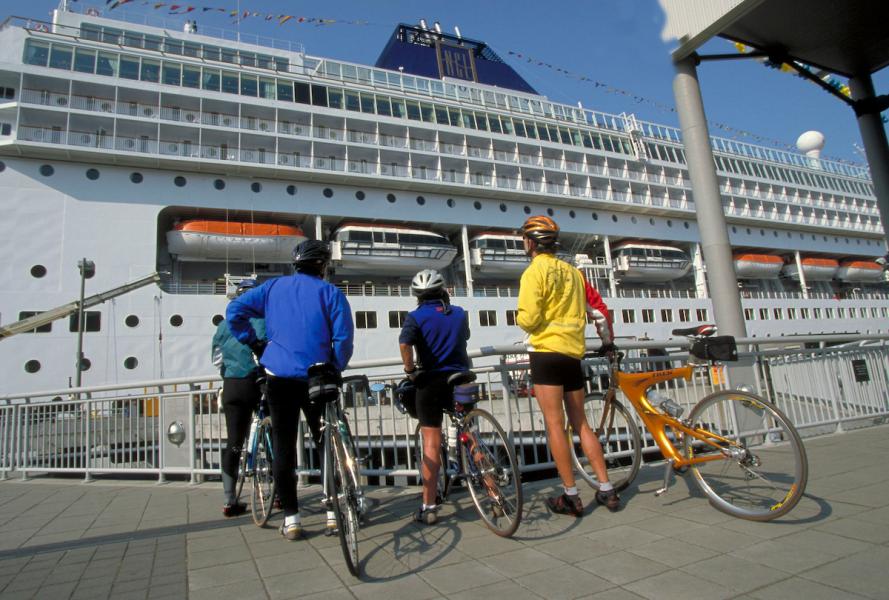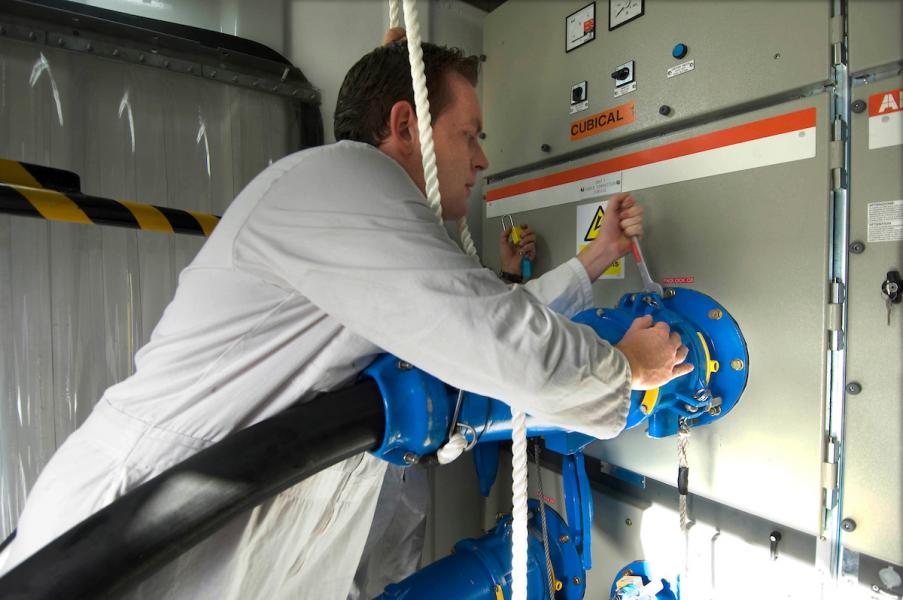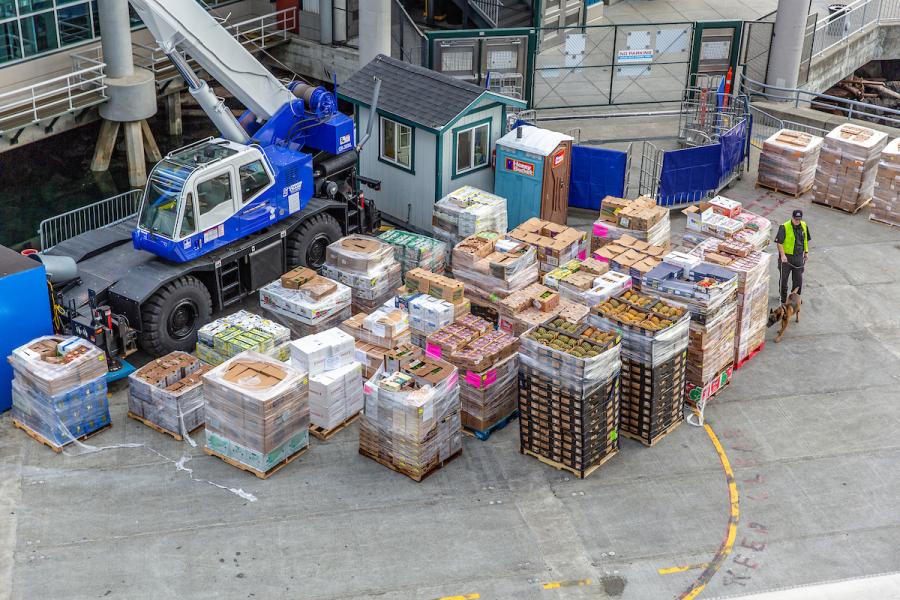Every year like clockwork, the cruise ships entering Seattle waters herald the beginning of our less-rainy season (sometimes called summer). It also means lots of people from other parts come to marvel at our beautiful scenery, spend money in our local businesses, and remind us that our own vacation time (and hopefully the nice weather) is just around the corner.
Because cruise ships in Seattle boost the local economy, here are a few facts about cruising that are important to know:
1. This year celebrates 20 years of cruising in Seattle
Time sure flies when Alaska cruisers are having fun! In 1999, cruise ships were a novelty in Seattle, with six vessels and a little more than 6,000 passengers. Since then, Seattle has emerged as the premier hub for Alaska and Pacific Northwest cruises, with more than 213 vessel calls projected between April and October 2019.

2. More than one million cruise passengers visit Seattle every summer
In 2017, Seattle celebrated the first milestone of welcoming one million cruise visitors to the region between April and October. Since 2017, cruise visitors continue to rise:
2018 1.114 million passengers
2019 1.208 million passengers forecast

These visitors have a positive economic impact on the region:
- In 2019, non-resident passengers spending time in Seattle spent an average of $850 per party pre-cruise and $697 post-cruise directly generating an estimated $226.8 million in business output and will support an estimated 2,490 jobs, and $83.2 million in wages including benefits.
- Each vessel call supports an estimated $4.2 million in economic activity for our region
- Suppliers from across the state, including seafood and produce companies, florists, farmers, vineyards, and maritime support industries have built strong businesses selling to cruise companies
Learn more about the economic impact of cruise on our region

3. Seattle was one of the first ports to plug in a cruise ship at the dock
The Port of Seattle’s goal is to be the most environmentally progressive port in North America. Working with Cochran Marine to develop the first technology, we were the first port in the U.S. in 2004 to install shore power capabilities at two cruise berths. Plugging in a large ship at the cruise terminal eliminates the need to run the ship’s engines for up to 10 hours in order to keep onboard systems running. This reduces emissions and helps keep our environment clean.
It’s such a good idea that the new cruise terminal will also have shore power.
The cruise industry and the Port have been working hard for decades to protect the environment by:
- Implementing a voluntary clean water agreement between the Port, the cruise lines, and regulators
- Managing wastewater discharge long before it was mandated by regulatory requirements
- Decreasing emissions from ocean going vessels, including cruise ships entering Puget Sound, by more than 67 percent over the last 10 years
- Executing rigorous solid waste handling and recycling programs that support our environmental values here in Washington
- Creating storm water best management practices for cruise vessel maintenance and operations while at-berth

4. The largest passenger ship to travel through the Panama Canal calls Seattle home
Just last May 14, 2018, the newly-commissioned Norwegian Bliss, (20 decks; 2,200 cabins; 4,000 passengers) made its maiden voyage from Germany to arrive in Seattle, its new home port. It’s the ninth-largest cruise ship ever built and made the Panama Canal transit just two years after it was expanded to accommodate larger ships. Seattle’s natural deep water harbor can accommodate these ships.

5. Provisioning a cruise ship is no small potatoes
In fact, it’s a lot of potatoes (and many other fresh foods) that are purchased from local suppliers. For example, one ship carrying 3,080 passengers would need the following fresh provisions (and more) to feed passengers on a one week cruise:
- 11,460 pounds of seafood
- 91,000 pounds of fresh fruits and vegetables
- 69,000 local eggs
Local suppliers keep cruise ships provisioned when they are in Seattle and support other businesses that supply products to the cruise lines. In fact, one local bakery uses 40,000 pounds of butter every three weeks to make enough croissants to supply the cruise ships.
Watch this video to learn how the cruise industry supports local farmers and small businesses.











